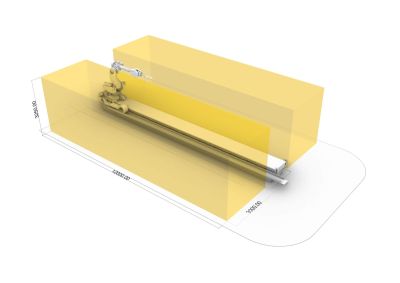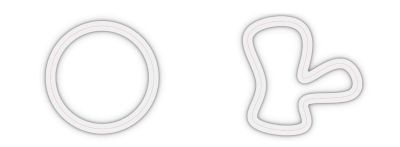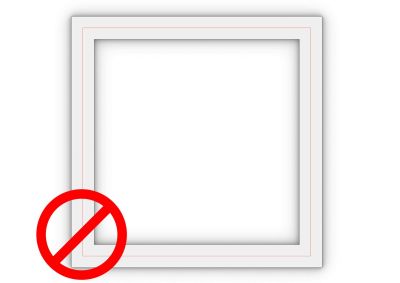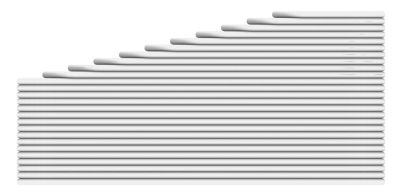Design guidelines
3D printing guidelines
3D printing with concrete is a very innovative technology that requires different ways of designing to ensure printability. Here you can find guidelines to help design suitably printable objects.
Object sizes

Printable Area
The 3D print factory has two print beds with maximum print area of (LxWxH) 12000 x 3000 x 3250 millimeters.

3DPF Maximum size
Maximum printable object
The most optimal objects for the 3D print factory should be no more than (LxWxH) 40000 x 1350 x 3250 millimeters with a maximum weight of 3000 kilograms. Objects within these parameters can be handled in house.
| Layer Width | Layer Height | Maximum unsupported overhang |
|---|---|---|
| 30 mm | 6 mm | 83° |
| 50 mm | 10 mm | 83° |
| 50 mm | 15 mm | 85,5° |
| 70 mm | 10 mm | 80,5° |
| 70 mm | 15 mm | 83,5° |
| 80 mm | 10 mm | 80,5° |
| 80 mm | 15 mm | 82,5° |
Print Path
Designing for 3D printing with concrete starts with being conscious of the print path. Designers should know what layer width their design needs. Doing this will ensure proper printing strategies, corners, interconnecting layers and overhangs.
Closed Loop
Traditional 3DCP designs are closed loops allowing for continuous print in a single direction.

Open Loop
Objects can also have open ended loops. In this case 3D printed layers would be built in alternating directions. This technique should be used sparingly.

Single Layer
Overlapping layers
Layers can also overlap each other other to make connections. This is useful with designing stairs for example. When doing so layers should overlap for a minimum of 5 millimeters in depth and 10 millimeters in length.

Overlapping Layers
Corners
Sharp corners
In traditional 3 DCP sharp corners are not possible.

Corners 3D printing
Rounded corners
3DCP produces rounded corners. Rounded print paths for corners should have a radius that is half of the layer width. For a layer width of 50 millimeters the radius should then be 25 millimeters.

Corners 3D printing
Printing strategies
Horizontal layering
Objects that have horizontal bottom and top layers can be sliced and printed in the traditional horizontal layers.

Horizontal layering
Stepwise layering
Angled top layers can be printed in a stepwise manner with horizontal layers

Stepwise printing
Non planar layering
Angled tops can also be produced using non-planar printing methods within certain parameters.

Non planar layering
Sectioning Objects
Objects exceeding the maximum size of the 3D Print Factory are still possible. The objects can be sectioned in the several elements than can be printed and assembled afterwards. These elements could also exceed the maximum weight if needed. These elements will then have to be moved by an external company.

Object Sectioning

Object Sectioning
Technical Specifications
| Standard lead time | Minimum of 7 working days depending on part size and curing time needed |
| Standard accuracy | ±10% |
| Surface structure | Unfinished parts typically have visible building layers on the surface |
| File formats | We accept file formats STL, 3DS, 3DM, 3MF, STP and SKP |
